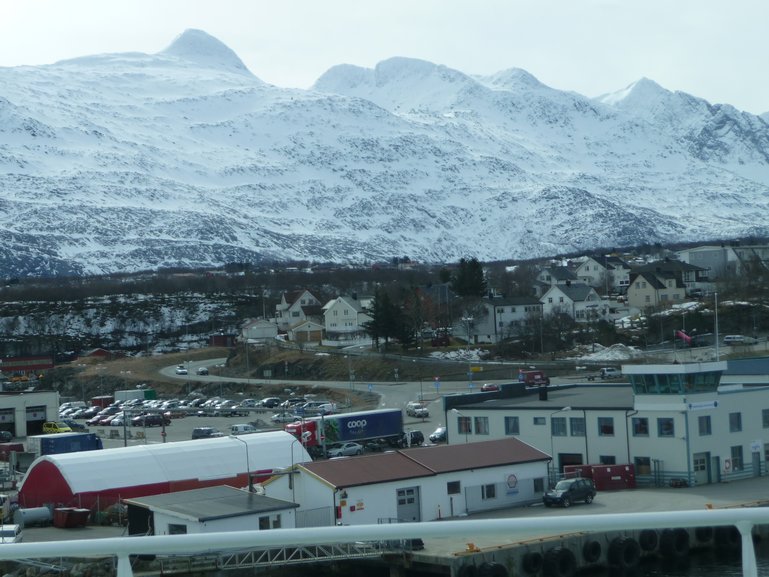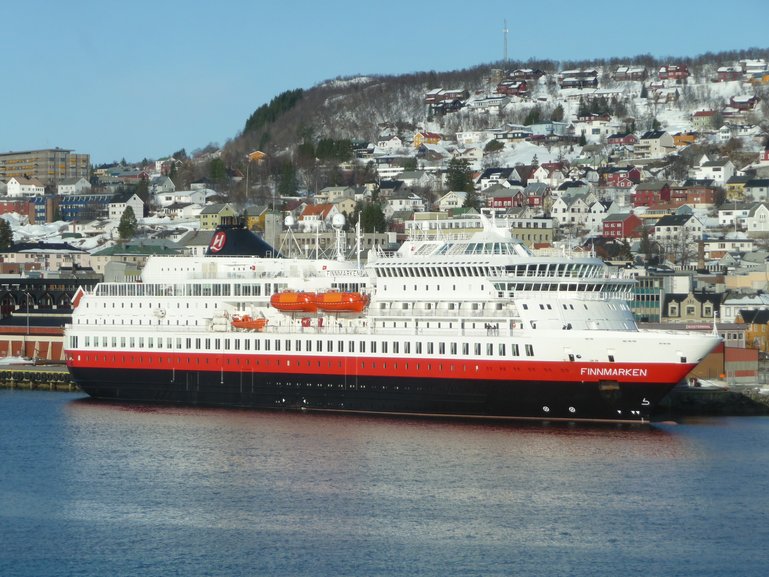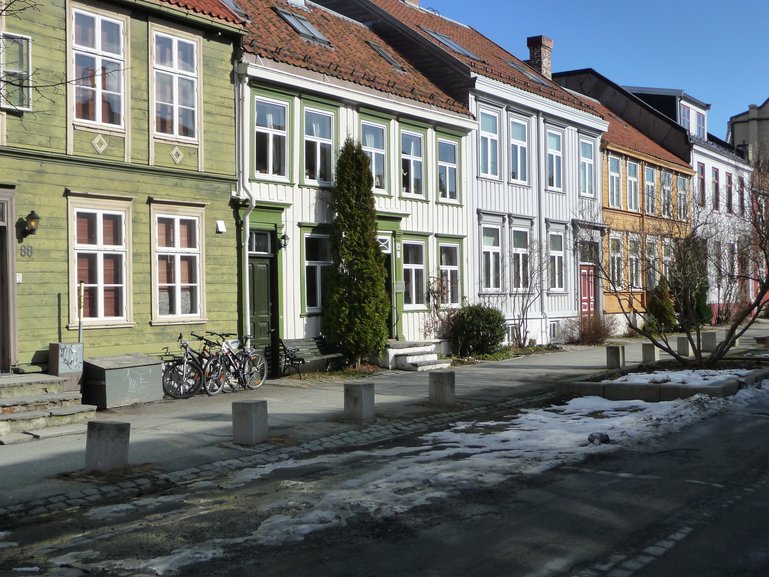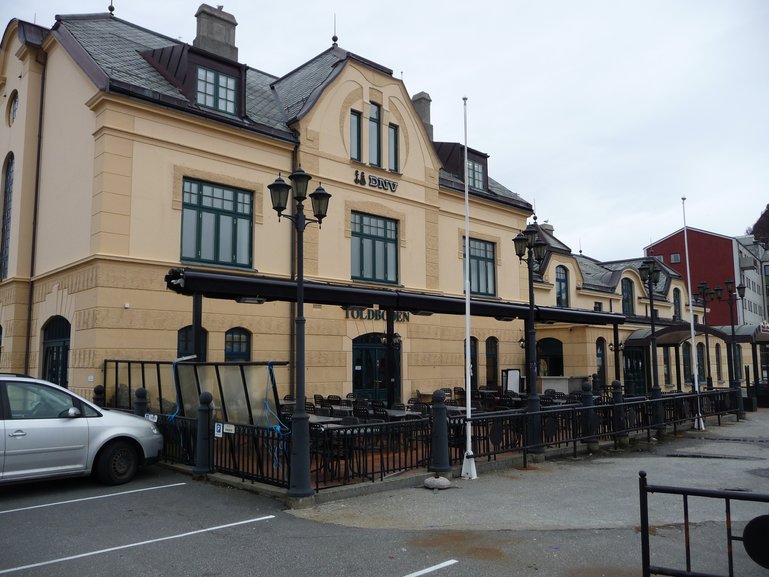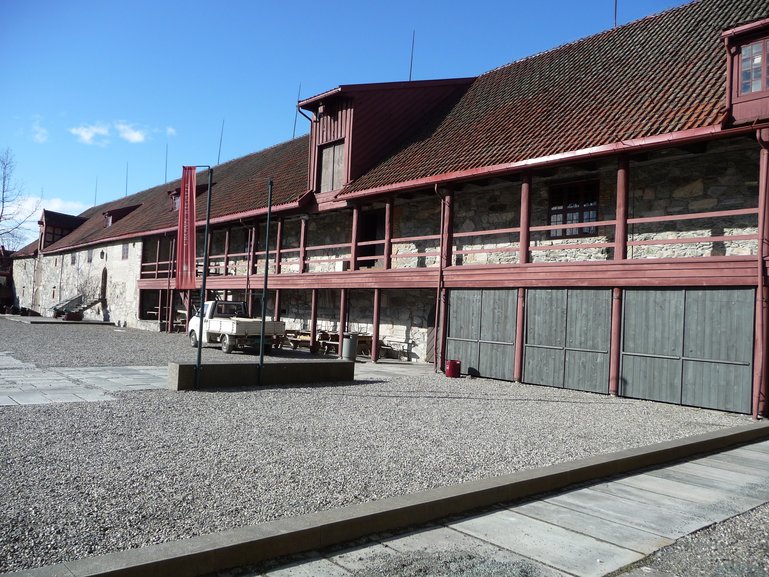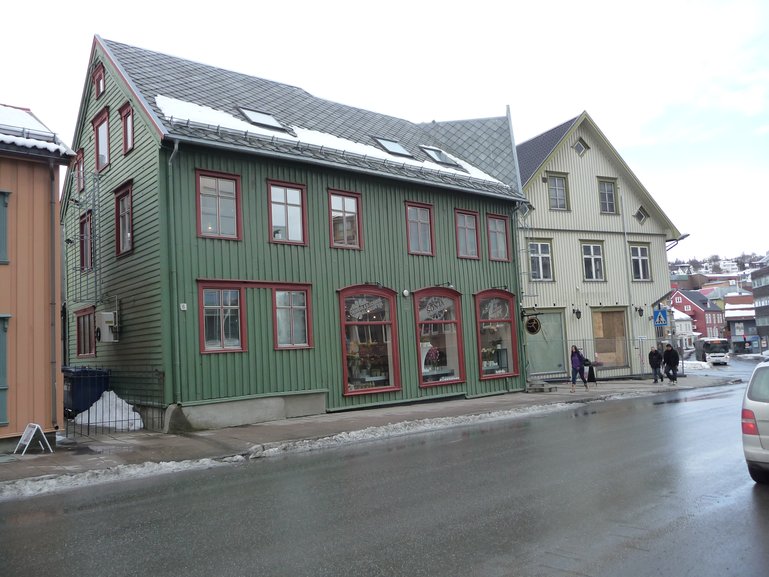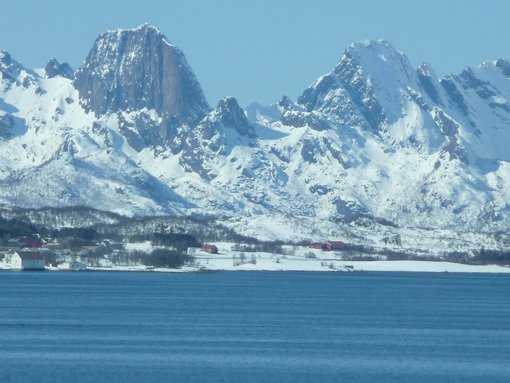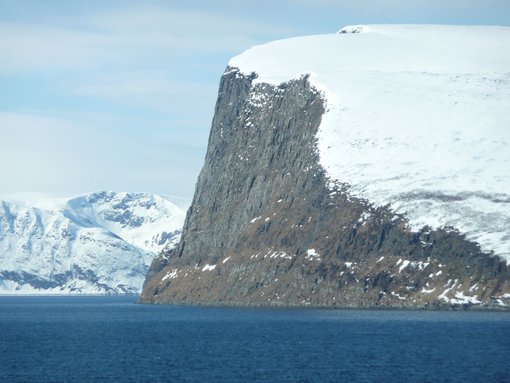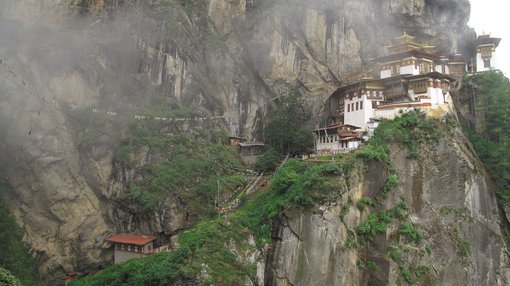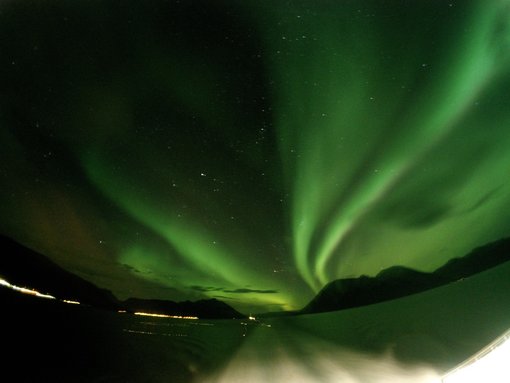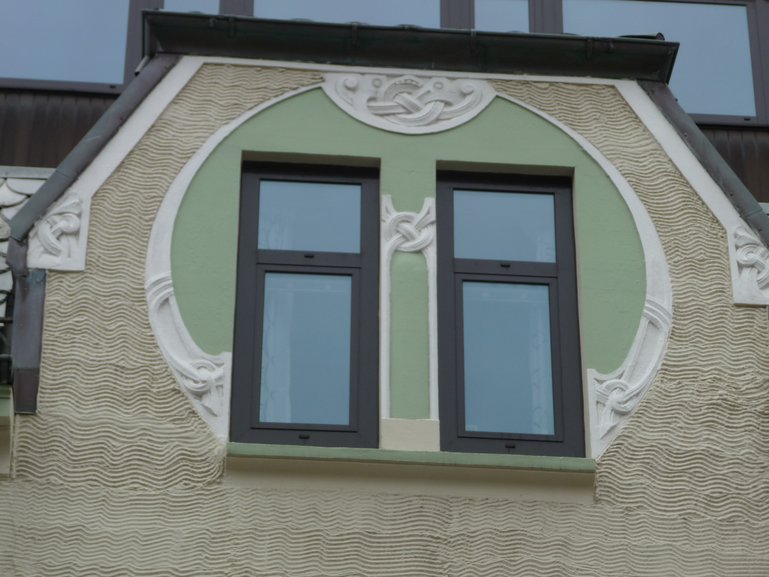
Aoslund Old Norway
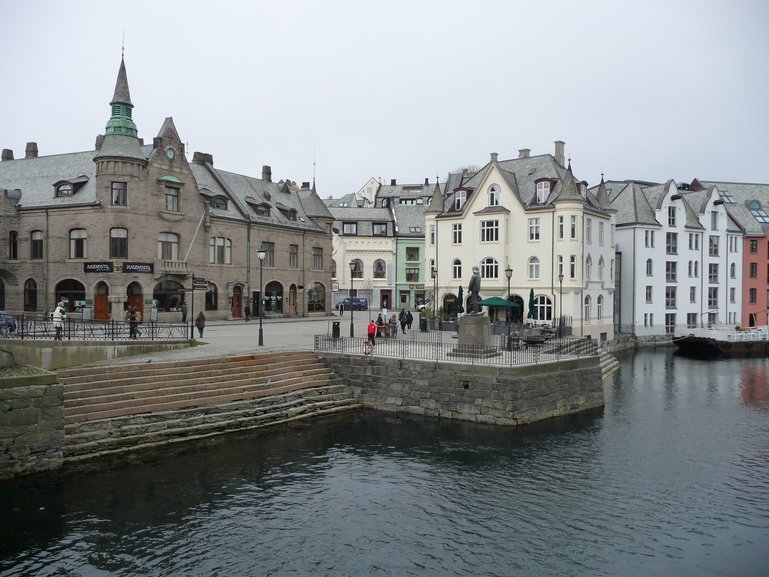
Aoslund Old Norway
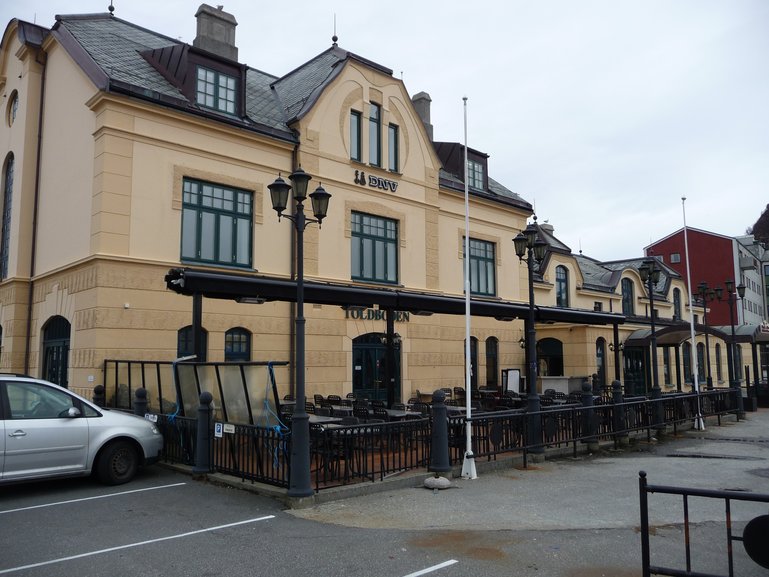
Old Norway
We flew Lufthansa with a change in Frankfurt. Frankfurt to Bergen is almost a straight shot north, along the Norwegian coast. As we approached Norway, the Captain came on and said, 'Its unusually good weather in Norway today, so I got the OK from air traffic control to fly 15,000 ft lower than our assigned altitude to give you a better view of the coast from the air.'
I included some photos from that flight.
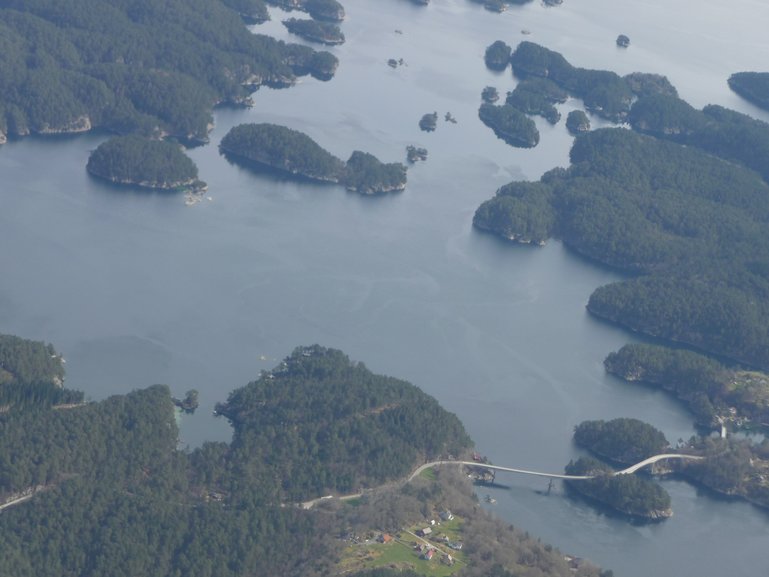
Lufthansa view
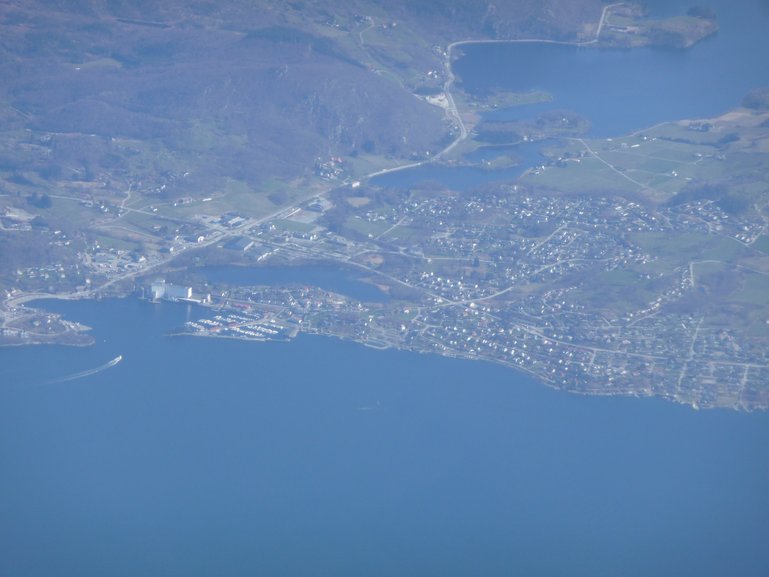
Lufthansa view
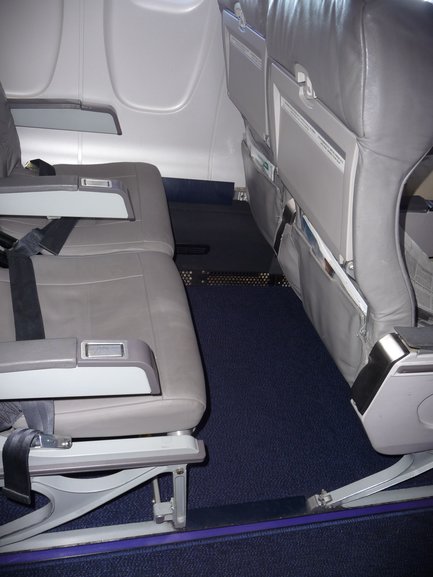
EU Business Class
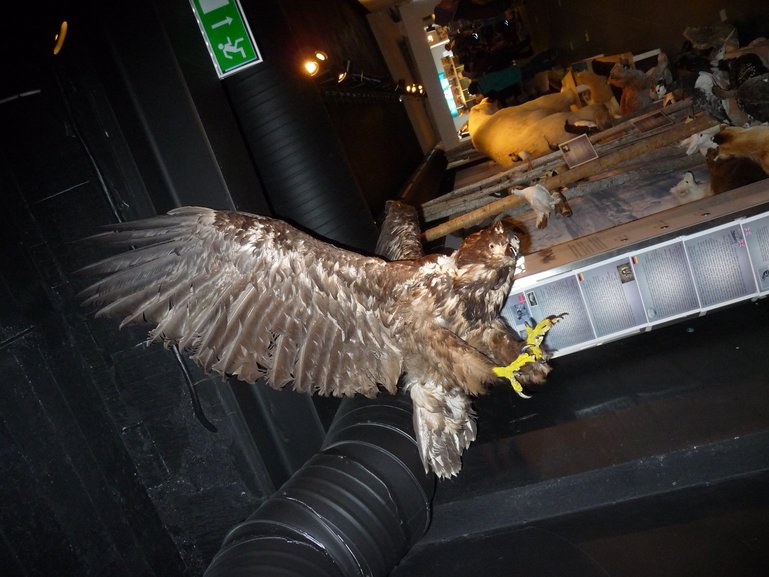
Hurtigruten Museum
Mostly, man made sights are buildings-- collections of buildings, 'quaint villages'; ecclesiastical buildings; palaces; and museums. It helps to understand Norway's man made sights and Norway's culture to know a little of the history of Norway, especially since Republicans will never tell you this nor let your kids learn it in school. Norway has the best government in the world, and that has been true for more than 100 years. Norway has no poverty in the sense that USA had 13% poverty before Trump made it worse. Norway has high taxes which everybody pays, but then the state redistributes the tax money to reduce income inequality. Norway's social security system is fully paid up for the next 100 years, and the pot is growing, partly because Norway's government owns 1.5% of all the publicly traded socks in the world. This investment, worth $1.35 trillion at the end of 2019, covers 20% of the annual government budget. Trump's government is in hock for a negative $25 trillion. In the 2008 economic crisis, the USA government racked up about a trillion dollars of increased national debt. Norway tapped its reserve funds and went out and bought 1% of all the listed stocks in the world at fire sale prices.
Norway has banned the sale of fossil fuel vehicles starting in 2025 and is on the verge of becoming the first fossil fuel free country, with 100% of energy soon to come from alternative, renewable power sources.
Norway was a declared neutral in WWII, but Hitler didn't care, invaded, and brought four years of misery to Norway. I think that shock was a major cause of Norway's frugal government-- save big for a rainy day-- and accounts for how small Norway's houses have been until recently-- frugal again. At the end of WWII, in 1945, Norway's average income per person was $5,700 compared to $16,000 for the USA. In 1970, just before Statoil (State Oil Co) started operating, it was $13,000 to $24,000. But in 2016, Norway was way ahead of USA, $76,400 to $53,000. Norway is new rich, and the impact of the hard years linger on, but was well managed by a brilliant socialist democracy.
History proves that Stalin had no designs on Norway. Late it WWII, Stalin invaded Norway to drive the Nazis out. The Norwegians welcomed the Red Army met with open arms as liberators. The only thing wrong with the Red Army's invasion of Norway from Norway's view point was that Stalin stopped the victorious advance of the Red Army after about 200 miles because that was enough to end the U-boat threat to American convoys bringing supplies to the Red Army through Murmansk. The Norwegians begged Stalin to finish the job, and run the Nazis out of the whole country, but Stalin demurred. At the end of WWII, Stalin's Army promptly returned to Russia..
As circumstances elsewhere forced Hitler to leave Norway, Hitler order a burned earth withdrawal. Much of Norway's infrastructure was destroyed in the German retreat. This destruction added to Norway's postwar poverty and set up the basic nature of Norway's man made sights today, which have three historical periods, 1] old stuff, built before the Nazis, which survived the Nazis; 2] poor post war buildings , and 3] modern rich Norway (say 1980-present). Immediate post war buildings were cheap and functional, and it shows. They are of minimal tourist interest. functional rather than attractive. Rich Norway buildings are gradually replacing poor post war Norway, and Old Norway thrives in the places the Nazis missed. It comes down to this: most of Norway's interesting buildings pre-date WWII. Many Norwegian towns are depressingly boring because they are understandably post Nazi quick, cheap and dirty construction.
The town of Molde is a good example of the interaction between man's world and nature's world. The scenery approaching and leaving Molde is one of the most spectacular sights on a trip full of spectacular sights, but Molde town was a real bummer. Totally destroyed in WWII, it was rebuilt in post war cheap and dirty construction, except for the new modern (rich Norway) church at one end of town.
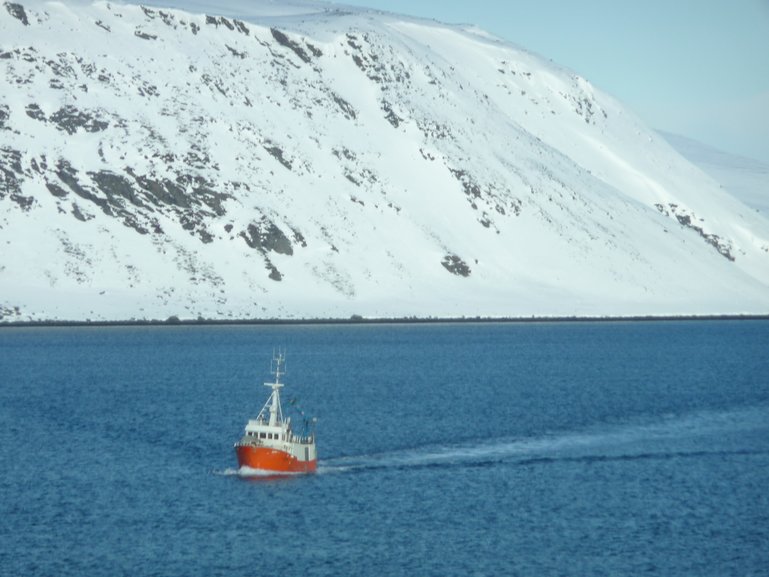
Fishing boat
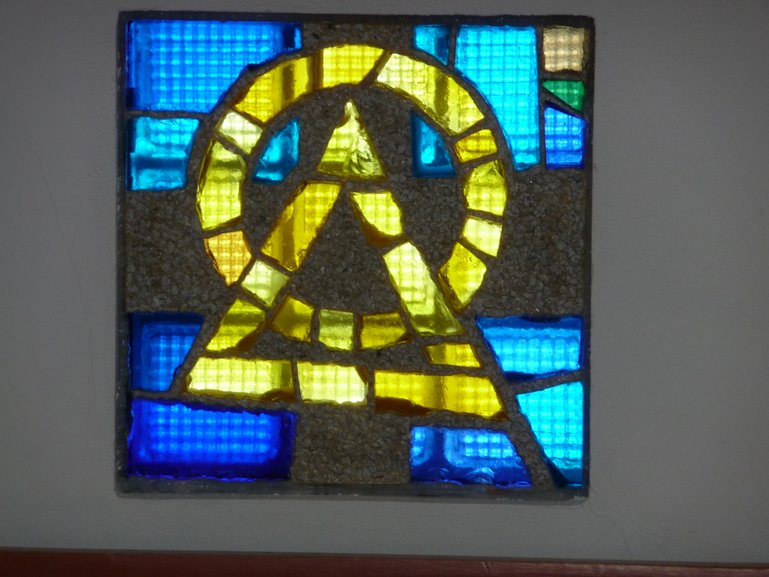
Modern church
The Ports
The round trip Hurtigruten route includes 34 ports, with stops lasting from 4-6 hours (Trondheim) to 10 minutes. We generally stepped ashore just to see what was going on, like cars boarding for the ferry service, a sign on the port office saying, "North Pole. 1,300 miles", three bus loads of school kids clambering on board for a three stop ride down the coast where they were met by their school buses which, by road, got there faster than the ship did. Fortunately, the kids were kept out of the Panorama Lounge and the bar lounge.
Theoretically, you can board the Hurtigruten at any port, but in high season, cabins are often fully booked fro the entire 34 port trip, so, if you don't buy the whole thing, you will most likely sleep on the floor or on the chairs and few couches in the lounges.
Ports in the far north had a fair number of Russian ships in port. We found there were three ways to identify Russian ships: 1] the Russian flag; 2] Cyrillic alphabet for the ship's name, and/or 3]. Norwegian ships were uniformly trim and tidy and not in need of paint. Russian ships uniformly looked like floating rust buckets.
Ålesund
Art Nouveaux buildings near the sea with mountain backdrops. A real charmer. In a way, the opposite historic experience of Molde where the scenery trumps the town. The star sights of Ålesund, although also in a very scenic setting, are the buildings. We found some reasonably priced sweaters on sale on the second floor of one of the major stores.
Trondheim
The first capital of Norway, with much history surviving in the central city. We walked from the port to the center of town and back. Taxi or bus into the town is also available. The Cathedral is impressive, with a unique facade. We probably spent about four hours exploring the central city.
Kirkenes
The iron ore mining town of Kirkenes is where the Hurtigruten turns around to head back to Bergen. Although not as far north as North Cape, Kirkenes is further north than Finland or Sweden. A very large statue of a Red Army infantryman tops a hill overlooking Kirkenes on one side, the coast on the other. This memorial honors the Red Army invasion near the end of WWII that drove the Nazis out of Norway. Another WWII monument in Kirkenes is the bunker where the town's population took shelter when various sides were bombing the area.
Kirkenes is a mining community, and the vast mines have created something like a moonscape abound the town. The Russian border is four miles from Kirkenes.
Tromso
A well preserved piece of interesting Old Norway with a classic wooden church (a wooden church is not the same as a Scandinavian wood stave church) in town, and a fine modern church across the Fjord. Don't just stick to the main street. Several parallel side streets are also worth a stroll.
Stokmarknes
The Hurtigruten Museum turned out to be more interesting than we expected. It had two parts, which now may be combined into a single building since the old Hurtigruten ship on display in now inside a modern glass structure. Heading toward the main street from the port, there is a pleasant small park on the left. Turing right on the main street took us to a small, pleasant modern church. The main street is of modest interest.
Bergen
capital of Norway for about 300 years, was a member of the Hanseatic League. Globalization was invented by the Roman Empire. Globalization was dead for nearly 1,000 years after the fall of Rome. The Western World without globalization is often called "The Dark Ages". Moderns Globalization began with the Hanseatic League.
Norway's second largest city, Bergen takes more than one day to fully see. Bergen can be roughly divided into three parts, the old Hanseatic city, or what's left of it after rebuilding from a disastrous fire several hundred years ago, called Bryggen or Vagan (the specific name of the old port). Lots of attractive old wooden buildings packed into a narrow space between the port and the mountain. The 13th-15th C old fort and palace protects the sea entrance into Vagan. Just a little uphill from Vagan, the Floyen is a cog wheel train to the top of the mountain. It is also a commuter tram, stopping to drop residents off literally on their doorstep. From the impressive view point at the top of the Floyen, we walked back down the mountain to Bryggen, an interesting trip through a dripping rain forest.
The wealthy prewar city is mostly between Vagan and the modern port where Hurtigruten docks. Some of the earlier city and most of the modern city expands east away from the inland end of Vagan. We found all areas were pleasant to explore on foot, with Bryggen being the most unique. We especially liked the narrow streets and wooden houses running up the side of the mountain behind the Hanseatic port town. We stumbled across a modern building between the Mariankirke and the old fort that has a series of excavations of the ancient town on exhibition under glass from the sidewalk and ground floor of the building. Tourist trap souvenir shops abound along the waterfront in Bryggen, but with careful shopping we managed to find a couple good deals, especially on sweaters, on sales. I got a Dale of Norway sweater for $150 ($175 adjusted for inflation). A pretty close match on Amazon.com is $350.
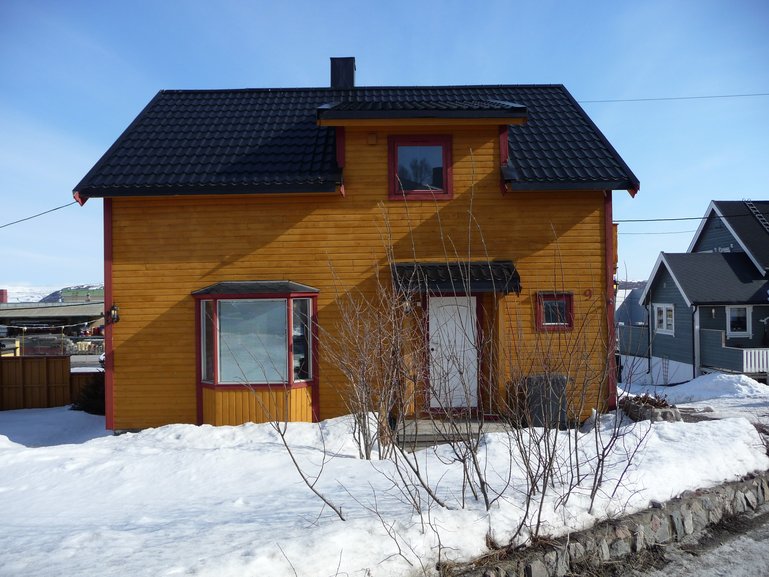
Kirkenes
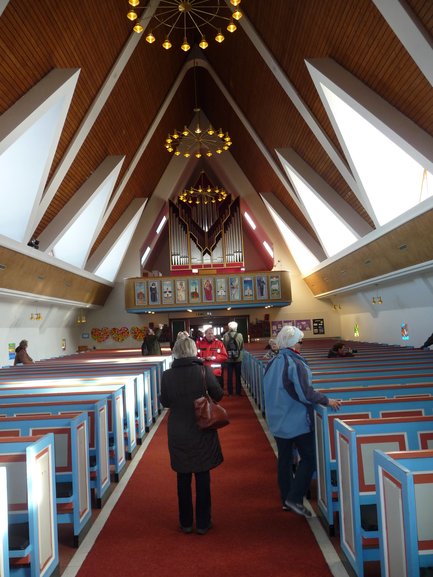
Modern church
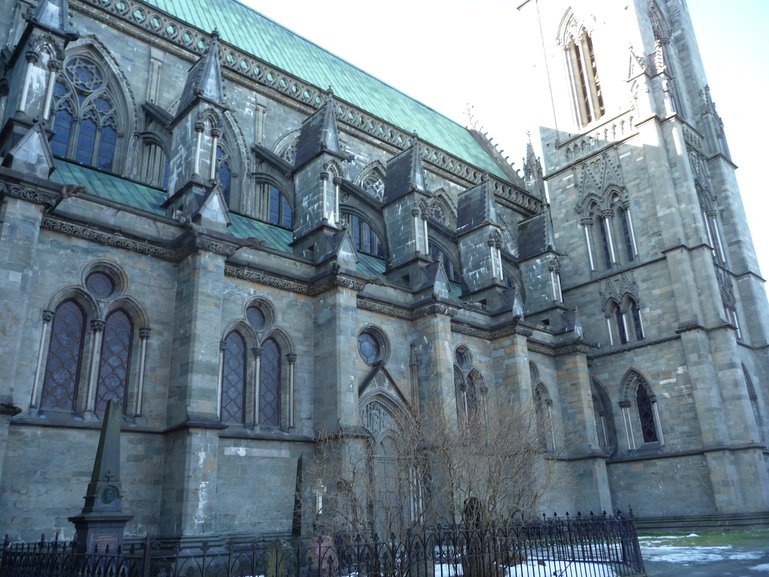
Trondheim
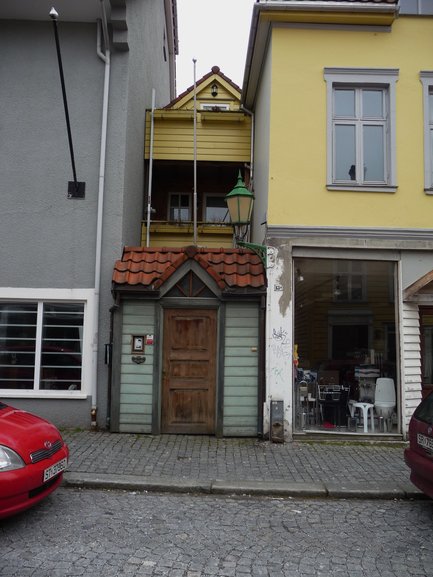
Bryggen
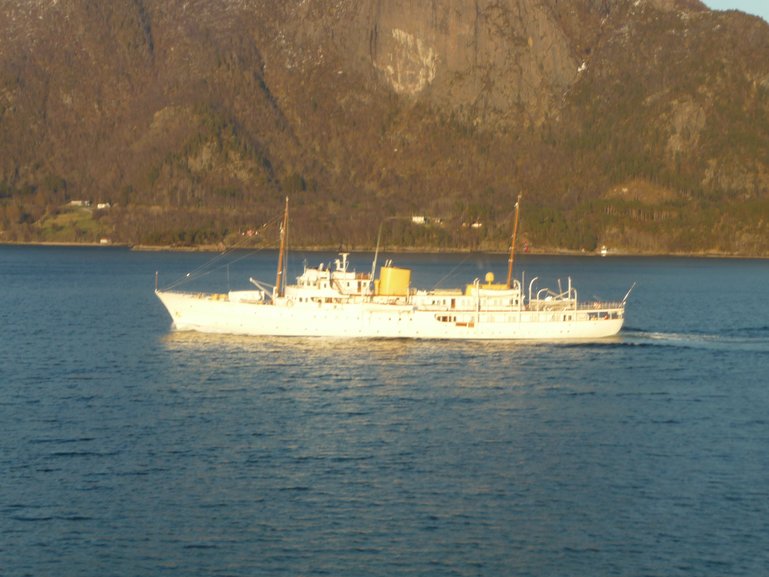
Passing the Royal Yacht
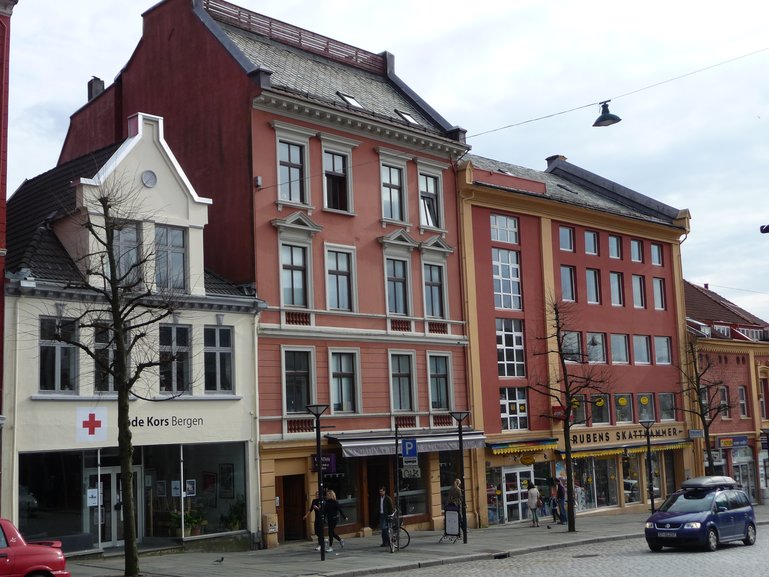
Bergen
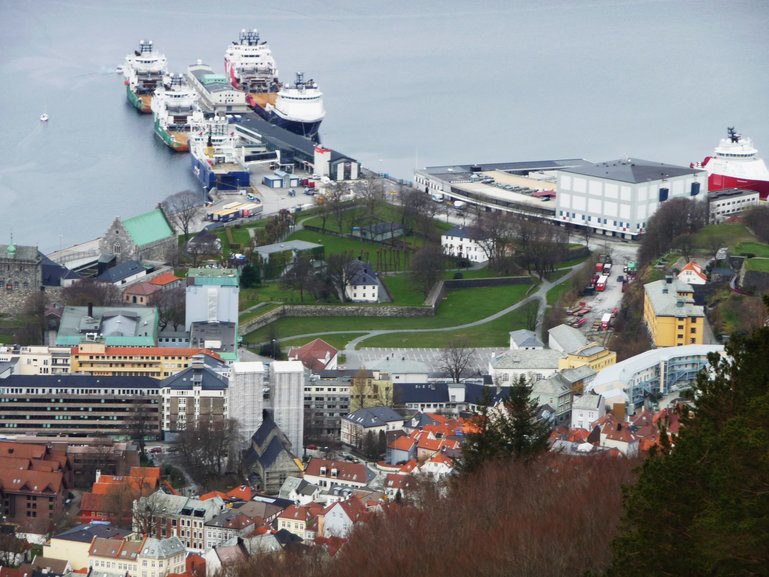
Bergen
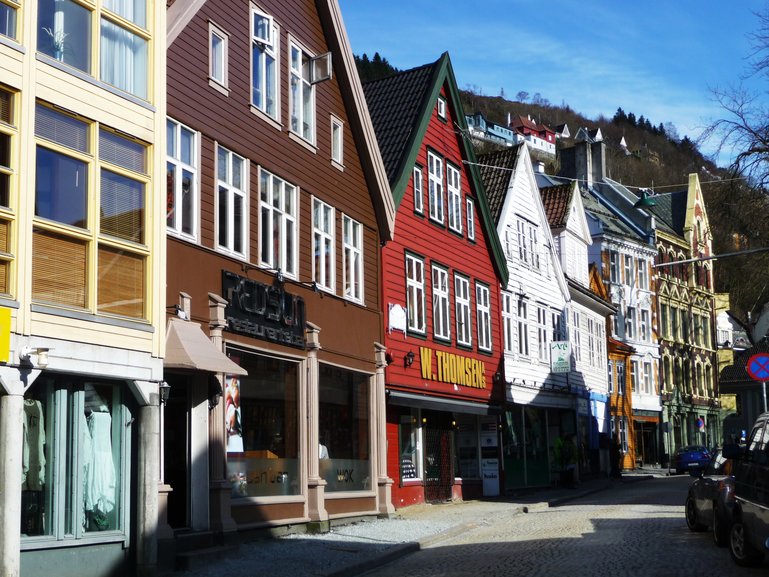
Bergen
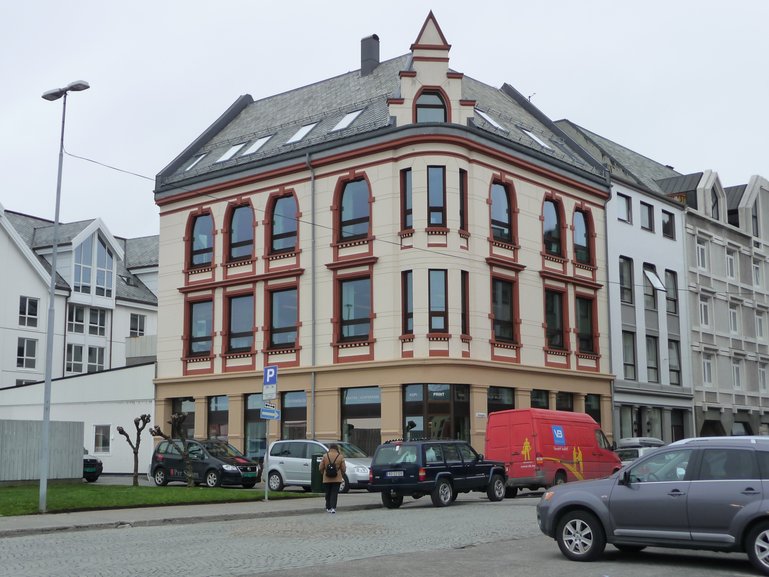
Trondheim
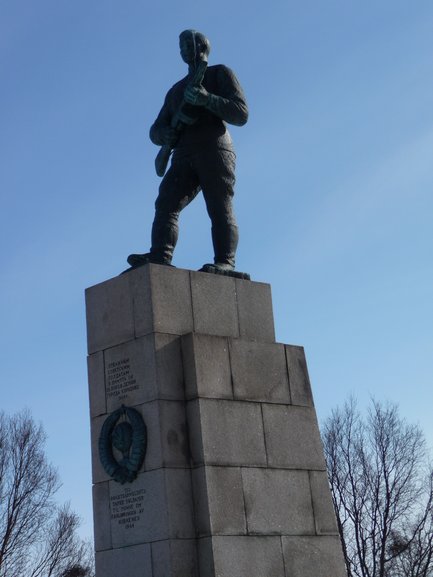
Kirkenes: honoring the Red Army








